The South Korean Ministry of Science and Information Communication Technology (ICT) has stoked controversy over their announcement of a 3.4 trillion won decrease in the research and development (R&D) budget. Professors and budding scientists who are dependent on government funding criticized the government for making such a hasty decision in a mere two months without an in-depth discussion. Concerned about the likelihood of a decline in small- and medium-scale projects, opponents of the R&D budget reduction pointed out that the United States was to add 8.9 billion dollars to its budget during the 2024 fiscal year. Many experts view cutting-edge technology as a strong element in the soft power of the United States as facilities are linked to such high technology including industries, governmental laboratories, and educational institutions. Aiming to witness firsthand how U.S. universities care for students who will work in the engineering field, Ewha Voice visited a governmental institution specializing in industrial technology and two prestigious schools well known for their student support systems.
Future of international cooperative research between the United States and South Korea
To explore the relevance of the U.S. engineering department, Ewha Voice conducted a preliminary investigation with Chan-Hyeok Jeong, manager of the Department of International and American Cooperation Management at Korea Planning & Evaluation Institute of Industrial Technology (KEIT).
Jeong’s work at KEIT revolves around discovering potential partners abroad willing to collaborate with domestic institutions. When an international cooperative project seems likely, KEIT is in charge of signing a memorandum of understanding to secure an outline of the agreement. For example, KEIT holds annual conferences with Semiconductor Research Corporation, an American association, to mingle with different companies overseas. Jeong explained that now adays , technological firms tend to seek connections that transcend national borders. When asked about the importance of these connections, specifically the exchange between South Korea and the United States, he offered three reasons.
“Frankly, the United States possesses technological competence,” Jeong said. “Every two years, experts evaluate each country, and according to the assessment, the United States surpasses South Korea by 15 to 20 percent in virtually every area except for display.”
In addition to obtaining high technology, Jeong also mentioned that abundant human resources is a factor making the United States appealing to foreign countries. Talented young people and engineers worldwide tend to come and contribute to the nation, which is one of the biggest reasons why the United States never runs short of human resources.
“Approximately 7 out of 10 companies in our country pick the United States as their desired cooperation partner,” Jeong explained.
Jeong emphasized that the United States is an influential player when it comes to technology, both in business and academia. To nurture such an advanced environment, strong support for students and school faculty is essential.
MIT aids students and professors with flexible academic environment
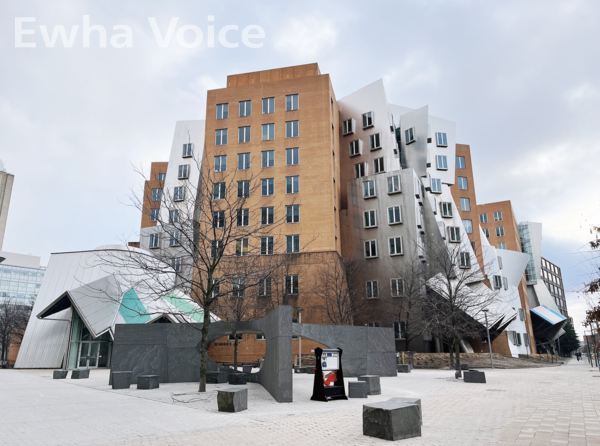
Massachusetts Institute of Technology (MIT), a leading university in technology in the United States, provides a fulfilling academic environment and various educational support for its pupils to become aspiring leaders in the global scientific community.
As one of the key factors that brought its notable achievements in the scholarly department, worldclass facilities are specially designed to fuel students’ concentration and passion for research. At MIT, efficiency is the value most sought-after, and its campus structure perfectly reflects this. For example, the Ray and Maria Stata Center, a building with a striking exterior that resembles irregular geographic shapes and angled walls, is home to offices and laboratories for the Electrical Engineering and Computer Science department (EECS). Its unique spatial designs of indoor halls and flexible labs allow for a chance to absorb and modify the environment to each student’s taste. Collaborative spaces are also available for all school members, giving more room for innovative thinking and conversations between passing people.
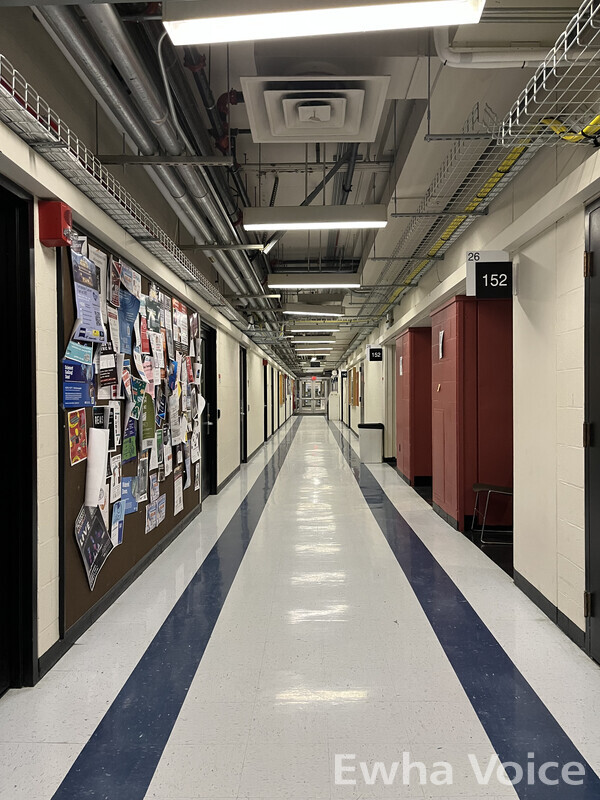
Traveling along the Infinite Corridor, an indoor route that spans major campus buildings and is commonly referred to as the spinal cord, students can move through buildings without having to exit and enter every time. This saves transportation time and yields convenience when moving around with heavy supplies.
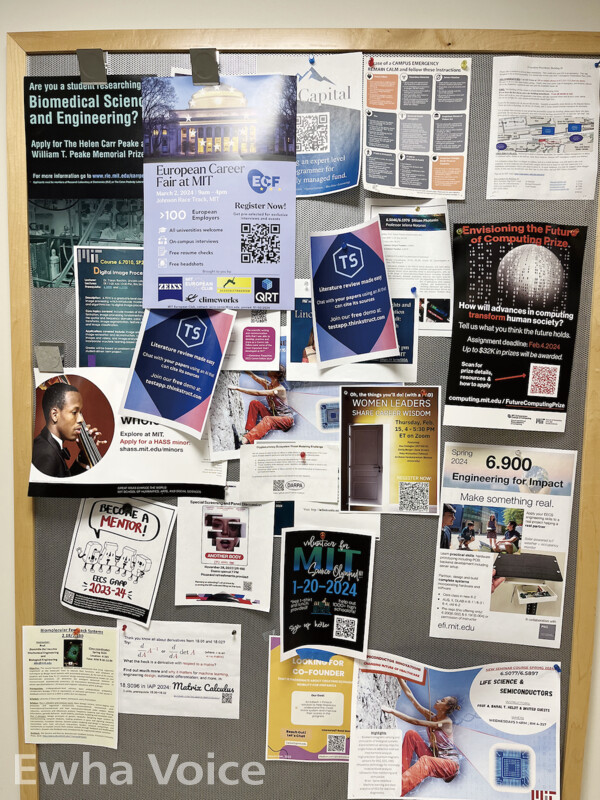
An additional factor contributing to MIT’s accessibility is its location in an urban area with neighboring universities just around the corner, creating an academic atmosphere.
“Since other universities such as Harvard are close by, students can readily conduct crossover projects or receive advisors from other universities,” said Shin Saebyeok, an Ewha alumna from Electronic and Electrical Engineering who is currently pursuing her Ph.D. in EECS at MIT.
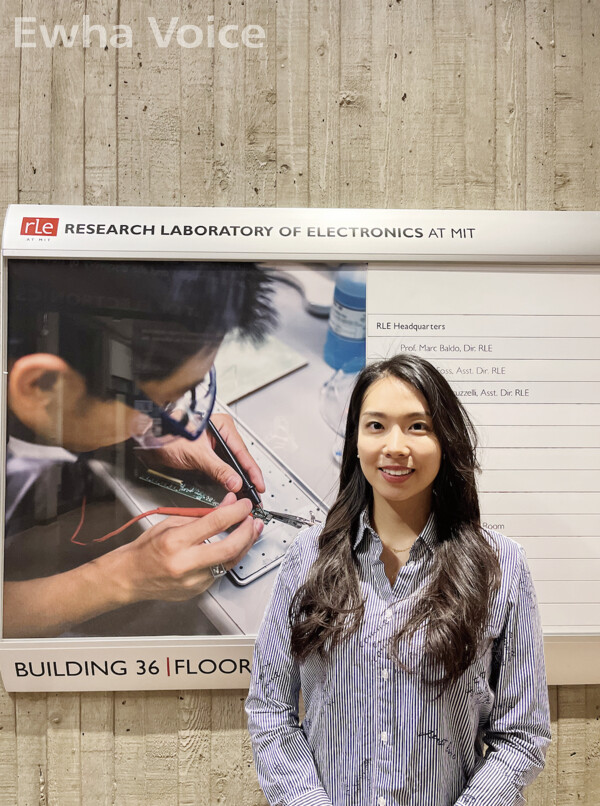
For example, if a student wishes to participate in a project or join as a laboratory intern in a field that differs from her major, she can ask to interact with professors from different areas of study. In the case of EECS, there are approximately 100 professors, covering almost all the concentrations related to the department.
“Having more educators definitely helps students make connections and provides opportunities both in academics and in creating a foundation for employment in the future,” Shin elaborated. “As a Ph.D. candidate, I am also able to have sessions after classes for open discussions and exchange feedback with graduate students.”
While the wage for graduate students at Korean universities dropped by 40 percent due to the R&D budget cut, MIT offers free tuition and health insurance that has been gradually increasing throughout the years.
Furthermore, the network for job employment and support is heavily developed at the university. Every year, the university offers career fairs where world-class companies hold briefing sessions and receive resumes from students. The employment process in the United States differs from South Korea in that it is usually arranged through personal recommendations rather than open recruitment. As a result, internship programs play a crucial role in job seeking. The school holds various internships with top-notch communities such as the MIT-IBM Watson Artificial Intelligence (AI) Summer Intern and the MIT Washington Office Internship Program.
In addition, the MIT Undergraduate Research Opportunities Program allocates $15 million to support students with a full package of exclusive mentoring from developing proposals to analyzing data for real research, lasting up to a year.
Other than financial and career-related support, MIT also takes interest in students’ well-being and campus life. Since people from diverse backgrounds gather at MIT, there are multiple events to create common ground between different nationalities and cultures. One called Cultural Night celebrates the wide variety of cultures and cuisines by displaying student-made booths and performances.
As Shin points out, there is much more freedom in connecting with various scholars and peers at MIT than in Korean universities. “Studying overseas in general has its hardships such as adapting to new environments and people,” Shin said. “Even so, I recommend it because it allows you to learn and conduct experiments on a whole new level.”
MIT is further renowned for its professional community which shows peak performance in its areas of expertise. This is a result of the university’s support for its faculty members.

Professor Jeehwan Kim and his team at MIT focus on nanotechnology in nextgeneration electronics. In the field of nanotechnology, it is difficult for individuals to acquire equipment due to high costs, which is why the university’s financial support is essential for research development.
“We usually receive startup funding when beginning as a school faculty member,” Professor Kim explained. “ I can submit proprosal and receive supplies such as conductors and related elements.”
With MIT being a popular spot for joint projects, various posters from educational institutions are plastered alongside the corridors of the buildings, seeking interaction with MIT engineers. Due to the institution’s emphasis on international collaborations, Professor Kim has worked on various multisectoral research projects with his peers from other universities, most recently working on AI hardware support with members of Cornell University and Georgia Institute of Technology.
“We benefit from collaborations since it allows us to fill in our weak spots,” Professor Kim said. “I strongly believe having the ability to use our specialties together will help us overcome the many challenges we face in the world.”
According to Professor Kim, interaction in both research and classes is what makes MIT outstanding. Educators work actively to reduce the power distance with students for a flexible learning environment, encouraging them to speak more with passion and pleasure.

“As South Korea has grown to become a nation with a high global status, I hope Korean students have the same confidence as MIT students in what they do when venturing to the global stage,” Professor Kim remarked.
Boston University cultivates autonomous students through curriculum and networks
Standing near the Charles River is a tall building resembling a stack of glass blocks. This state-of-the-art building is the Boston University Center for Computing & Data Sciences.
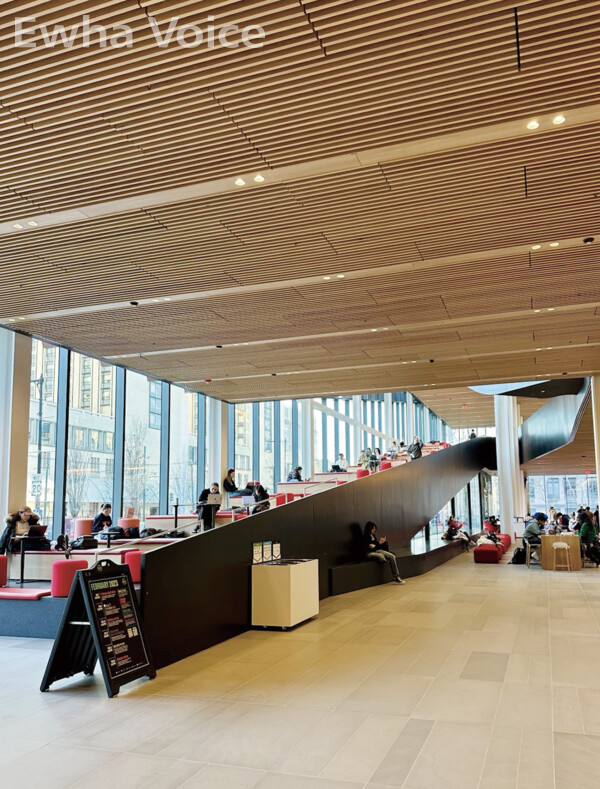
Inside, the first floor consists of a lounge where students can converse, study, or have a snack. The upper floors house offices and spaces for break time or a quick meeting.
Hee Jae Kim is a 2019 Ewha graduate from the Department of Electronic and Electrical Engineering. Currently, she is in the doctorate program of the Department of Electrical and Computer Engineering at Boston University and conducts research in the areas of computer vision, robotics, and machine learning.
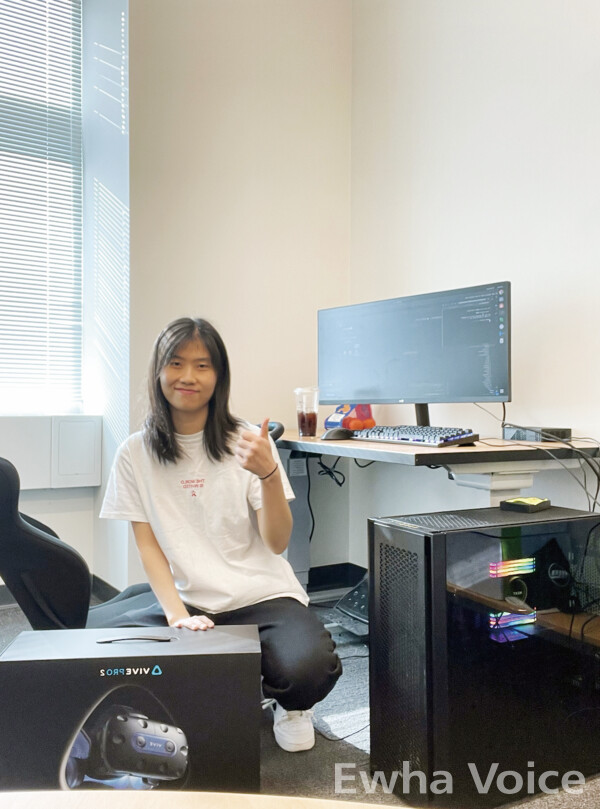
In her first year at Boston University, she submitted her proposal and was accepted to Red Hat Research. As her work requires highly efficient computers and servers, Kim felt content with the facilities the school and the company provided.
“Red Hat Research is a corporation that builds bridges between universities and government agencies to produce output,” Kim explained. “As a part of its project, I was kindly provided with research expenses as well as a personal office.”
Kim elaborated on her journey of settling into her present lifestyle. When preparing to study abroad, she researched to identify the area of her study and the professor under whom she would be working. Her ultimate motivation for choosing Boston University was that Professor Eshed Ohn-Bar’s specialty corresponded to her interests.
In addition to quality facilities, Kim pointed out that teamwork is common. Acknowledging the abundance of seminars at her school, she expanded on how the experience where Ph.D. students and candidates were introduced and gave feedback about their work changed her. Discussions with people from all around the world helped her learn new things and look at ideas from different angles.
Suna Lee, who also graduated from the Department of Electronic and Electrical Engineering, is currently pursuing a master’s degree in data analytics engineering at Northeastern University. Lee agreed with Kim on the emphasis on conversation skills in U.S. university culture while also mentioning specific characteristics of Boston in comparison to her experience in Tennessee as an exchange student.
“Personal connections and networking may be easier to fortify in the United States compared to other countries,” Lee said. “Since the population is denser here in Boston compared to Tennessee, meeting people becomes effortless, and more importantly, my personality has became more active.”
While students appreciate an enjoyable and fruitful college life, most also anticipate success in securing a job. Many ways to present your work and connect to research-related firms exist in Boston University. According to Kim, for master’s students, opportunities abound to interact with a variety of laboratories and annual forums.
Also, a unique club named Boston University Undergraduate Women In Science and Engineering (BU uWISE) support undergraduate women who wish to research in the STEM field. In this club, members discuss about research topics while forming a community, which becomes helpful when they hunt for a job.
Finally, students generally become interns during their third or fourth year of pursuing their doctorate. In the best-case scenario, before graduation, students work as an intern in one or two companies and eventually commit to one firm. However, this is not the only option as frequenting conferences and getting job offers related to the research is also possible.
MIT and Boston University are two examples that show how fully utilizing school support systems for research and job employment networking helps foster young professionals in the sciences. As for South Korea, education and research have also been foundational elements of the high-tech industrialized economy that we pride ourselves on. Still, the government’s decision to reduce the R&D budget has raised concerns about what the future holds for the sciences in South Korea. Considering how R&D budgets are utilized in the United States, it is imperative for South Korea to reconsider its budget cut in R&D for a greater purpose to actively support its scientific community and universities.

